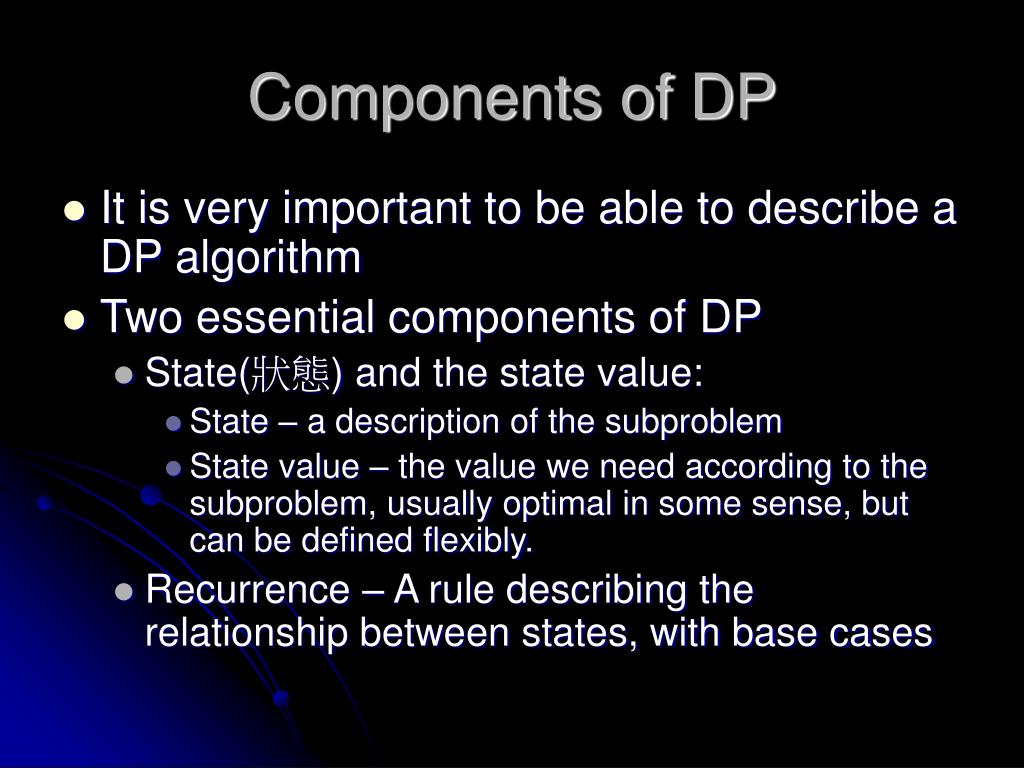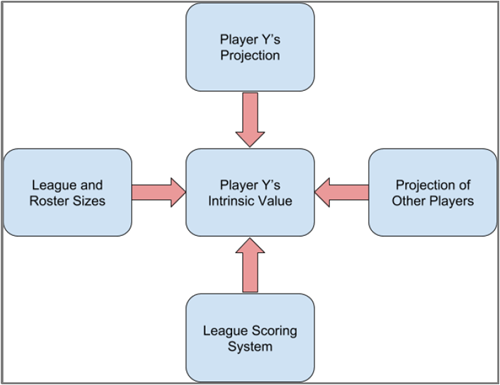About Stock's Value
A stock could be overbought or oversold and it could be over-priced (overvalued) or udder-priced (undervalued). Overbought-oversold condition is defined by technical analysis. Over-priced, under-priced stock's value is calculated from the fundamental data.
There are several ways to calculate a value of a stock and each fundamental analyst will show you his/her own way. All these calculations are subjective and could be argued whether they are correct. There is no standard way to do it. If you are not a professional fundamental analysts, you could get easily lost in the calculations of the real and expected stock's value.
In DFS fundamental analysis the DFS stocks intrinsic value could be calculated in a simple way by using the Benjamin Graham's formula. This is the easiest way to get a stock's value based on the current Earnings Per Share (EPS) and PEG Ratio (Price/Earnings Growth). Again, while the EPS is a reported number, the PEG Ratio is estimated by the analysts from Reuters or other investment rating company and it is an approximate expected earnings growth. Respectfully, the Benjamin Graham's formula does not guarantee a correct stock's value - it is an approximate number expected by the professional analysts. Should something change a stock's earnings growth expectation it will affected the expected value of a stock.
The Benjamin Graham's Formula is
Intrinsic Value = EPS x (8.5 + 2 x PEG) x 4.4 / Yield
If you are mid- or long-term investors, it always a good idea to combine technical analysis with elements of fundamental analysis. You may expect better returns when you buy under-price (by fundamentals) and oversold (by technicals) stock or when you sell short overpriced (by fundamentals) and overbought (by technicals) stock.
How the Pros Make Money Playing Daily Fantasy Football (FanDuel & DraftKings)
You can easily replace I with fantasy points per game, and R with a price component however, and determine value for that player. Because this is daily however, and all we care about today, I choose to look at projected points per game as my 'I'. My formula is as follows: Value = Projected Fantasy Points Per Game / (Price/$1000). Dwyane Wade is $7800, so. 4 (7.800) + 10 = 41.2 points to hit value in a cash game. 4 (7.800) + 14 = 45.2 points to hit value in a tournament. I know this seems very high, but given the fantasy-friendly scoring system on DraftKings, it's pretty reasonable to expect, especially given.
Understanding Site Salaries
The ability to determine a players value vs their point production (output) is what separates the professional Daily fantasy football players that are making money playing Fanduel and Draftkings vs those who are losing money.
Fantasy football is a game based on risk and reward. A player's value can only be determined by their expected production exceeding the cost to draft them. There is no way to determine 'value' without some idea of the cost.
It's no different than your season long fantasy league; the cost would be a player's average draft position. In daily fantasy, the cost is much easier to understand. Every DFS site whether its FanDuel or DraftKings, provides salaries for each player, and only way to determine a players value is by comparing a player's salary vs his anticipated production.
After all, the actual production you receive from a player is not as important as the production you receive relative to his salary. That's why daily fantasy players create spreadsheets to determine a player's actual value by their cost per-point of production to figure out which players are the best values and how to best optimize lineups. Player salaries are an absolutely vital aspect of understanding value.

What do I mean by cost per point of production?
For example in your season long league, if you drafted Mike Evans in round 5 and he gets you 160 fantasy points this year or Vincent Jackson in round 3 and he gets you 170 fantasy points, who is the better value? Clearly Mike Evans is the better value. Daily fantasy football is no different, except every week we need to know which player will give us the most production for their designated salary.
In daily fantasy sports, if you draft Aaron Rodgers at a cost of $9900 and you project he will get you 30 points or Matt Ryan for $6000 and you project he will get you 20 points, who is the better value?

To calculate a price of a players point of production we divide a players salary by the projected points we think a player will score.
Aaron Rodgers $9,900/30(pts)= $330 per point of production
Matt Ryan $6,000/20(pts) = $300 per point of production

Clearly Matt Ryan is the better option for two reasons. First, he costs less per point of production and second, selecting Ryan for you lineup saves you $3,900 in cap space. That's HUGE when you only have $60,000 cap space to spend on FanDuel and $50,000 cap space available to spend on DraftKings.
Why is this great when Rodgers will score more points?
Because using Rodgers gives you less to spend on other player positions. This means you will be sacrificing production in other positions because you can only afford lesser quality players.
Dfs Value Formula Calculator
Selecting Ryan gives you allows you to select a stud wide receiver or running back in you lineup that will make up the production lost between Rodgers and Ryan.

Another point Daily Players consider is a players ceiling vs their floor. What that means is Rodgers floor is lowest points you expect Rodgers to score and his ceiling is the most you think Rodgers will score. Now going back to our calculations what if Rodgers floor is 20 points and his ceiling is 30 points?
Rodgers $9,900/20 points = $495 per point!
If Rodgers doesn't produce, your spending $495 per point and that is just too expensive and will cost you in other areas of your team. If Ryan gets his 20 points it only cost you $300 per point!
Determining Value Across Different Positions
I covered how to determine a players value based on the same position, but how do you tell if a players fantasy production value is worth the price across positions? If Gronk cost you $7,000 and Calvin Johnston costs you $9,500, who is more valuable?
Using All the Information Available to Make Your Selections
So why doesn't everyone make and perform spreadsheet analysis?
For starters, it's very time consuming to make a spreadsheet, entering each player's name, their salary, coming up with their expected production, and then calculating their cost per point of production. Imagine doing that for every position? That's why professional daily fantasy football players do this, because they make a living playing daily fantasy sports, so its worth it ot them to do this whereas the average person does not have the time to do this. Then after doing that you need time to perform the analysis
So how can the average guy even the odds and create a spreadsheet or obtain this player cost per point of production data?

What do I mean by cost per point of production?
For example in your season long league, if you drafted Mike Evans in round 5 and he gets you 160 fantasy points this year or Vincent Jackson in round 3 and he gets you 170 fantasy points, who is the better value? Clearly Mike Evans is the better value. Daily fantasy football is no different, except every week we need to know which player will give us the most production for their designated salary.
In daily fantasy sports, if you draft Aaron Rodgers at a cost of $9900 and you project he will get you 30 points or Matt Ryan for $6000 and you project he will get you 20 points, who is the better value?
To calculate a price of a players point of production we divide a players salary by the projected points we think a player will score.
Aaron Rodgers $9,900/30(pts)= $330 per point of production
Matt Ryan $6,000/20(pts) = $300 per point of production
Clearly Matt Ryan is the better option for two reasons. First, he costs less per point of production and second, selecting Ryan for you lineup saves you $3,900 in cap space. That's HUGE when you only have $60,000 cap space to spend on FanDuel and $50,000 cap space available to spend on DraftKings.
Why is this great when Rodgers will score more points?
Because using Rodgers gives you less to spend on other player positions. This means you will be sacrificing production in other positions because you can only afford lesser quality players.
Dfs Value Formula Calculator
Selecting Ryan gives you allows you to select a stud wide receiver or running back in you lineup that will make up the production lost between Rodgers and Ryan.
Another point Daily Players consider is a players ceiling vs their floor. What that means is Rodgers floor is lowest points you expect Rodgers to score and his ceiling is the most you think Rodgers will score. Now going back to our calculations what if Rodgers floor is 20 points and his ceiling is 30 points?
Rodgers $9,900/20 points = $495 per point!
If Rodgers doesn't produce, your spending $495 per point and that is just too expensive and will cost you in other areas of your team. If Ryan gets his 20 points it only cost you $300 per point!
Determining Value Across Different Positions
I covered how to determine a players value based on the same position, but how do you tell if a players fantasy production value is worth the price across positions? If Gronk cost you $7,000 and Calvin Johnston costs you $9,500, who is more valuable?
Using All the Information Available to Make Your Selections
So why doesn't everyone make and perform spreadsheet analysis?
For starters, it's very time consuming to make a spreadsheet, entering each player's name, their salary, coming up with their expected production, and then calculating their cost per point of production. Imagine doing that for every position? That's why professional daily fantasy football players do this, because they make a living playing daily fantasy sports, so its worth it ot them to do this whereas the average person does not have the time to do this. Then after doing that you need time to perform the analysis
So how can the average guy even the odds and create a spreadsheet or obtain this player cost per point of production data?
Lockdown Corner now offers this salary vs projection price per point of production information. We can send you the most used players salaries on FanDuel and DraftKings. We calculate their production based on the average projected points by fantasy 'gurus' and calculate the cost per point of production. Having this data allows you to turn your projections into value ratings without the hours' worth of work involved
How to use Cost Per Point of Production Data?
Dfs Value Formula
I will get into this in another article. This data is a great guide for users but the human factor is still important in creating your teams. Knowing who is injured, who is starting, and strength of matchups are extremely important.
